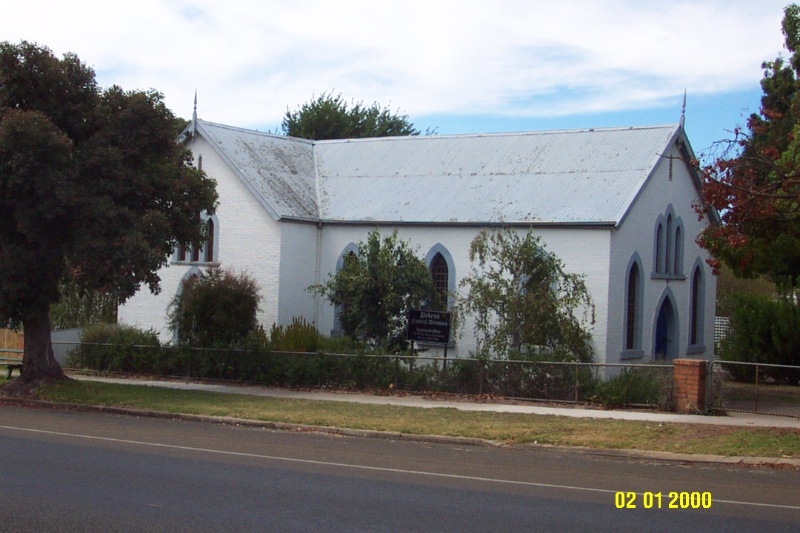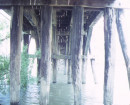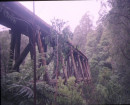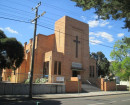METHODIST CHURCH (FORMER)
177 HENTY STREET, CASTERTON, GLENELG SHIRE
-
Add to tour
You must log in to do that.
-
Share
-
Shortlist place
You must log in to do that.
- Download report


Statement of Significance
The first section of the former Wesleyan Methodist Church, Henty Street, Casterton was built in 1877. Within ten years a major extension added a new nave and converted the original into transepts. No architect, designer or builder has been linked with the construction. The building is a very simple interpretation of the Gothic Revival style, a style which the first Methodists had eschewed. Services had been held at Casterton from at least the early 1860s when Ministers visited from Portland and Hamilton. The Merino Circuit, which included Casterton and beyond, was formed in 1867 with the Rev. R. M. Hunter as the first Minister. Casterton appears to have been a strong and committed congregation, with the usual hard-working dedicated individuals and inducing at least two important callings to the ministry. With Casterton beginning to eclipse Merino, a parsonage was built next door in 1891. A Sunday school, later extended but now demolished, and a tennis court were built before World War 2. A new vestry and tennis pavilion were built after WW2, using bricks from the Merino parsonage. The church became redundant when the Methodist and Presbyterian congregations joined to form the Casterton Uniting Church congregation in the late 1970s. The building was purchased by Pedens Funeral Directors P/L and converted into a funeral chapel. The building was altered internally and painted externally. It retains a fair degree of integrity and is in good condition. The tennis court, pavilion and timber store survive at the rear.
How is it Significant?
Pedens Funeral Directors, the former Wesleyan Methodist Church, is of historical and architectural significance to the Glenelg Shire.
Why is it Significant?
Pedens Funeral Directors, the former Wesleyan Methodist Church and its setting are of historical significance for representing the early influence and importance of the Methodist Church in Casterton and the district generally. It demonstrates the dedication of the local congregation and clergy to establishing and consolidating religious order in the far Western District of Victoria, including cooperating with other denominations. It is of further historical significance as the continuous focus for the work of the members and ministers of the congregation of Casterton for over 100 years. The building is of architectural significance for its simple interpretation of the Gothic Revival style and as a comparison with other churches.
-
-
METHODIST CHURCH (FORMER) - Usage/Former Usage
Funeral Directors
METHODIST CHURCH (FORMER) - Physical Description 1
Pedens Funeral Directors P/L, the Former Wesleyan Methodist Church, Casterton is a small church in a simple Gothic Revival style. The church is built of red brick, now painted pale blue, with cement rendered details around the doors and windows. The nave of the church is an addition to the original nave which then became its transepts. The second nave is therefore aligned southwest-northeast, parallel to Henty Street. The original entrance remains on Henty Street but the opening was closed in the late 1950s (Milward, 1977, p. 12). . The middle window in the north wall was also closed to form a background for the pulpit and altar table. Over the entrance there is a group of three simple lancet Gothic windows, above these a triangular plaque which states 'Wesleyan Methodist Church 1877', and in the apex a very small ventilator. The second nave has an entrance at the southwest end, now used as the main entrance. It has a matching set of lancet windows and a ventilator but two extra windows have been introduced. The door is timber, ledge and brace construction with wrought iron hinges. The second nave has three bays and, from an early photograph, the original small paned timber windows may have been recycled but all the windows now have later leadlight glazing. The window architraves are simply rendered. The gable roofs of corrugated iron have timber finials on the end of each gable. A small vestry with a chimney was added to the end of the east transept. There is a small weatherboard store at the rear of the property. A tennis court was constructed at the rear and a pavilion has been added to the end of the store.
The interior of the church was furnished and decorated traditionally with a banner painted above a plain cross stating 'The Gift of God is Eternal Life'. The memorial windows were dedicated to the memory of: Rev. Arthur Lelean who served 1891-2; Jemima and Stephen Rowley and their son, Francis James; Ida Illingworth (1872-1940); Arthur Illingworth (1876-1940); Amy Ann Milward (1884-1950); Agnes and Charles Lester; Vincent M. Underwood (1911-1935); Ellen and William Cross; Henry Coets Coulson; and Margaret and Ralph Coulson. There are three memorials in the church. The first is to Private H. A. Sealey of Casterton who died at Blomfontein, South Africa on 30th April, 1900. The second is to Private Eric Rossie who was killed in action on 21st October 1917. The third is to Donald Finlay McLean who died on 12th February 1937. According to the memorial, he was 'Chaplain to His Majesty's Forces/Great War 1914-1918/Minister, Author, Lecturer who received his call to the Ministry in this Church and travelled the world in the service of his beloved Master'. 'Rev. G. Lawrence Turner, of Tasmania, was working in Casterton as a bank clerk when he received his call to the ministry in 1947. He revisited Casterton as President of Conference in June, 1975' (Milward, 1977, p. 13).
The church has a short fence of metal post and wire and with cream brick piers (c.1950s). There are some young and mature trees within the garden setting and a very large twin-trunk Ash (Fraxinus sp.) at the side.METHODIST CHURCH (FORMER) - Physical Conditions
Good externally.
METHODIST CHURCH (FORMER) - Historical Australian Themes
8. DEVELOPING AUSTRALIA'S CULTURAL LIFE
8.6: Worshipping
8.6.1: Worshipping together
8.6.2: Maintaining religious traditions and ceremonies
8.6.3: Founding Australian religious institutions
8.6.4: Making places for worship
8.6.5: EvangelisingHeritage Study and Grading
Glenelg - Glenelg Shire Heritage Study Part One
Author: Carlotta Kellaway, David Rhodes Mandy Jean
Year: 2002
Grading:Glenelg - Glenelg Heritage Study Stage Two (a)
Author: Heritage Matters
Year: 2006
Grading:
-
-
-
-
-
CASTERTON RAILWAY STATION
 Victorian Heritage Register H1663
Victorian Heritage Register H1663 -
TOWN HALL
 Southern Grampians Shire
Southern Grampians Shire -
STOCK SELLING RING
 Glenelg Shire
Glenelg Shire
-
177 Fenwick Street
 Yarra City
Yarra City -
19 Cambridge Street
 Yarra City
Yarra City -
2 Derby Street
 Yarra City
Yarra City
-
-











